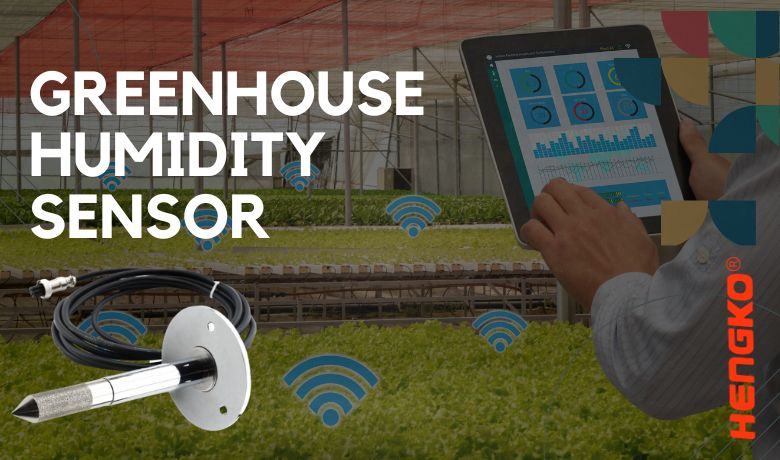-
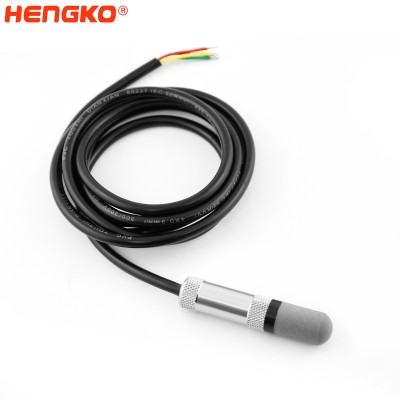
RS485 Modbus Air Temperature and Humidity Sensor HT-609
The HT-609 is a RS-485 remote temperature and humidity sensor that gives you real time temperature and humidity measurement data at the same time. It contain...
View Detail -
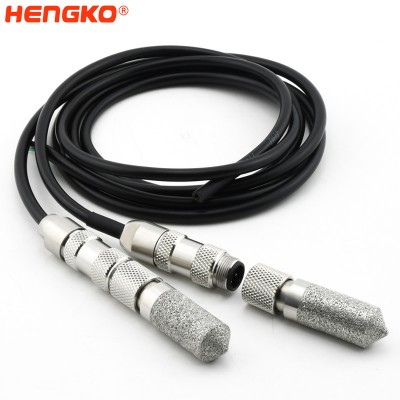
Waterproof IP66 RHT-H3X I2C exchengeable ±1.5%RH high accuracy temperature and humidity...
HENGKO relative humidity sensor probe is an anti-rust, robust, and precise RHT30 sensor, which can master enterprise-class and industrial-level applications....
View Detail -
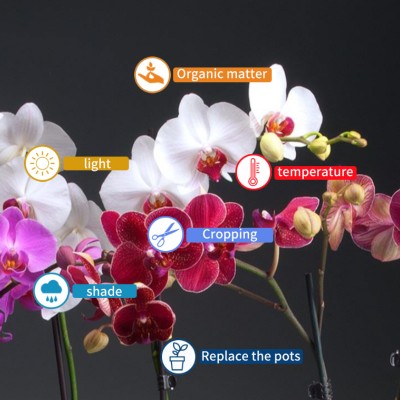
greenhouse monitoring system – iot temperature and humidity sensor
Orchids need certain temperature and humidity conditions to grow and bloom, and their flowering time may not be exactly in line with marke...
View Detail -

Air temperature and relative humidity transmitter with porosity stainless steel probe p...
HT-802W/HT-802X temperature and humidity transmitter adopts wall-mounted waterproof housing. It is mostly used in the situation of bad outdoor and on-site en...
View Detail -

HG803 remote temperature and relative humidity transmitter with porous humidity probe p...
Product Describe HG803 Series Temperature and Humidity Monitor has been designed to measure, monitor and record temperature and humidity. It is a perfect sol...
View Detail -

RHTX 4-20mA RS485 temperature humidity transmitter for greenhouse
HT802P is a Humidity and Temperature Sensor, with two channels outputting 4mA to 20mA / RS485 Modbus of humidity and temperature transmitter, and has an LCD...
View Detail -
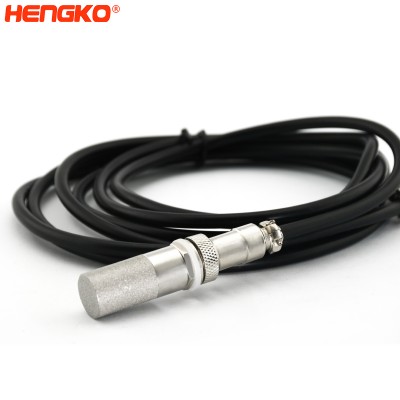
Digital relative humidity sensor probe with 4pin Aviation Plug for Greenhouse Flowers N...
DIGITAL TEMPERATURE & HUMIDITY SENSOR (WITH STAINLESS STEEL PROBE) HENGKO temperature and humidity sensor probe include a high precision RHT-H series hum...
View Detail -
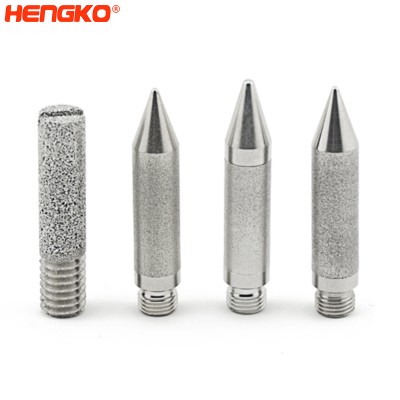
RHTX Series mesh-protected weather-proof humidity sensor probe housing
HENGKO stainless steel sensor shells are made by sintering 316L powder material at high temperatures. They have been widely used in environmental protection,...
View Detail -

IP66 air temperature and humidity probe for greenhouse
HENGKO temperature and humidity probe detectors can be applied in various fields: telepoint base stations, electronic control cabinets, production sites, sto...
View Detail -

HK94MBN stainless steel sintered porous humidity sensor housing for greenhouse temperat...
HENGKO stainless steel sensor shells are made by sintering 316L powder material at high temperatures. They have been widely used in environmental protection,...
View Detail -
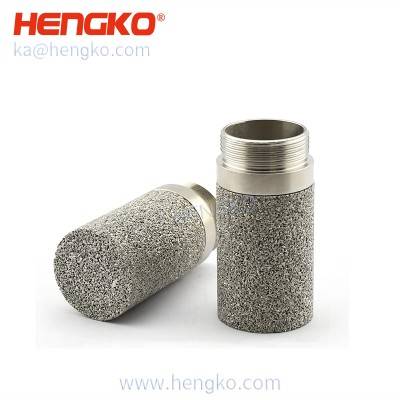
HK104MCU Sintered Porous Stainless steel Waterproof temperature and humidity Sensor Pr...
HENGKO stainless steel sensor shells are made by sintering 316L powder material at high temperatures. They have been widely used in environmental protection,...
View Detail -
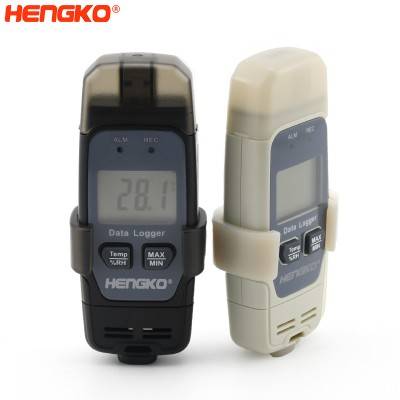
Wireless Portable USB Temperature and Humidity Data Logger Wholesale
High precision reusable 1S collection time settable temperature and humidity data logger To help monitor and maintain the ideal growing conditions for your p...
View Detail -
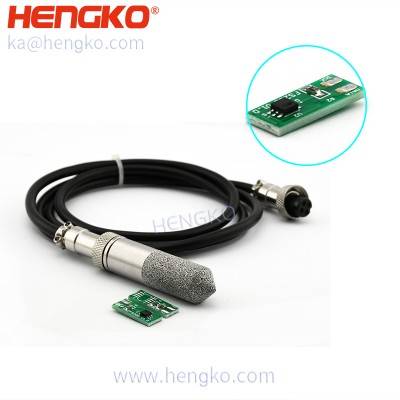
HENGKO RHT series high prisicion electronic PCB chips for temperature and humidity sensor
HENGKO temperature and humidity module adopt high precision RHT series sensor equipped with a sintered metal filter humidity sensor housing for large air per...
View Detail
Popular Temperature and Humidity Transmitter used for Greenhouse ?
The most popular type of temperature and humidity sensor for greenhouses is the capacitive humidity sensor. This type of sensor is accurate, reliable, and easy to use. It is also relatively affordable, making it a good choice for most growers.
Here are some of the reasons why capacitive humidity sensors are so popular for greenhouses:
* Accuracy: Capacitive humidity sensors are very accurate, with a typical accuracy of ±3% RH.
* Reliability: Capacitive humidity sensors are very reliable and have a long lifespan.
* Ease of use: Capacitive humidity sensors are easy to use and require very little maintenance.
* Affordability: Capacitive humidity sensors are relatively affordable, especially when compared to other types of humidity sensors.
In addition to capacitive humidity sensors, there are a number of other types of temperature and humidity sensors that can be used in greenhouses. These include:
* Resistive humidity sensors: These sensors are less accurate than capacitive humidity sensors, but they are also less expensive.
* Optical humidity sensors: These sensors are very accurate, but they are also the most expensive type of humidity sensor.
* Wet-bulb/dry-bulb humidity sensors: These sensors are the least accurate type of humidity sensor, but they are also the most affordable.
The best type of temperature and humidity sensor for a greenhouse will depend on the specific needs of the grower. For example, if a grower needs a very accurate sensor, then a capacitive or optical humidity sensor would be a good choice. If a grower needs a more affordable sensor, then a resistive or wet-bulb/dry-bulb humidity sensor would be a good choice.
Main Features of Greenhouse Humidity Sensor
1. Accurate humidity sensing:
Greenhouse humidity sensors provide accurate humidity readings, allowing for precise control of the humidity levels in the greenhouse.
2. Real-time monitoring:
These sensors offer real-time monitoring of the humidity levels, which enables prompt action to prevent any damage to the plants.
3. Wireless connectivity:
Greenhouse humidity sensors may be equipped with wireless connectivity features that allow the user to monitor the humidity levels remotely.
4. Durable design:
Designed to withstand the harsh conditions of the greenhouse environment, greenhouse humidity sensors are made with durable materials and are built to last for a long time.
5. Easy to install:
Most greenhouse humidity sensors are easy to install and can be quickly integrated with the greenhouse automation system.
6. Cost-effective:
Greenhouse humidity sensors are cost-effective solutions that help to reduce energy consumption,
increase plant yield, and prevent plant damage caused by excessive humidity.
7. Data logging and analysis:
Some greenhouse humidity sensors come with data logging and analysis features
that enable growers to track the changes in humidity levels over time, helping them to optimize their growing conditions.
8. Low maintenance:
Greenhouse humidity sensors require minimal maintenance, which makes them a convenient
choice for growers who need to focus on other aspects of their greenhouse operations.
Install Advice for Greenhouse Humidity Sensor :
1. Position the sensor at plant height:
The optimal position for a humidity sensor is at the plant height
since it provides accurate readings of the humidity levels where it matters most.
2. Avoid direct sunlight:
Direct sunlight can cause the sensors to malfunction,
so it's best to avoid placing the sensor in areas with direct sunlight.
3. Avoid areas with high airflow:
Areas with high airflow can cause the sensor to provide false readings.
Ensure that the sensor is placed away from areas with high airflow, such as windows or vents.
4. Mount the sensor securely:
The sensor should be mounted securely to prevent it from being knocked over or damaged.
Mount it in a location where it is unlikely to be interfered with accidentally.
5. Calibrate the sensor:
Before installing the sensor, it's important to ensure that it is properly calibrated.
Follow the manufacturer's instructions to calibrate the sensor accurately.
6. Connect the sensor to the control system:
Once the sensor is installed, it's time to connect it to the greenhouse automation system.
Follow the manufacturer's instructions for wiring and programming the sensor for optimal performance.
7. Test the sensor:
After installation, test the sensor to ensure that it is providing accurate readings and is functioning correctly.
Make any necessary adjustments to the sensor or the greenhouse environment as required.
By following these steps, you can install a humidity sensor that will help you to regulate your greenhouse's environment,
ensuring ideal growing conditions for your plants.
Greenhouse Monitoring Sensors, You can Check Video as follow
FAQ about Greenhouse Humidity Sensor
1. What is a greenhouse humidity sensor?
A greenhouse humidity sensor is a device designed to measure and monitor the moisture content in the air within a greenhouse environment. It provides real-time data on the humidity levels, allowing growers to maintain optimal growing conditions for their plants.
2. How does a greenhouse humidity sensor work?
Greenhouse humidity sensors typically utilize advanced technology such as capacitive or resistive sensors to measure the relative humidity in the air. These sensors detect changes in electrical properties caused by the presence of moisture, converting it into a measurable output.
3. Why is monitoring greenhouse humidity important?
Monitoring greenhouse humidity is crucial for maintaining optimal growing conditions for plants and ensuring their health and productivity. Maintaining proper humidity levels is essential for several reasons:
1. Regulation of transpiration:
Transpiration is the process by which plants lose water vapor through their leaves. The rate of transpiration is influenced by various factors, including humidity levels. When humidity levels are low, transpiration rates increase, leading to excessive water loss from plants. This can cause plants to wilt, become stressed, and experience stunted growth. Conversely, when humidity levels are too high, transpiration rates decrease, and plants may not receive sufficient water.
2. Prevention of fungal diseases:
High humidity levels can create a favorable environment for the growth of fungal pathogens. These pathogens can cause a variety of diseases, such as powdery mildew, botrytis, and downy mildew, which can damage or destroy plants. Maintaining proper humidity levels helps to suppress the growth of these pathogens and protect plants from disease.
3.Improved nutrient uptake:
Proper humidity levels are essential for efficient nutrient uptake by plants. When humidity levels are too low, the rate of nutrient uptake decreases, as the stomata on the leaves, which are responsible for nutrient absorption, close to conserve water. Maintaining optimal humidity levels helps to keep the stomata open, allowing for efficient nutrient uptake and supporting plant growth.
4. Seed germination and seedling establishment:
Maintaining consistent humidity levels is crucial for seed germination and seedling establishment. Seeds require a moist environment to germinate successfully, and seedlings need proper humidity levels to develop strong roots and foliage.
5. Pollination:
Proper humidity levels can also influence pollination rates. Some insect pollinators, such as bees, are less active in low humidity conditions, which can affect the pollination of certain plants. Maintaining optimal humidity levels can help to ensure successful pollination and fruit set.
In summary, monitoring and maintaining greenhouse humidity is essential for optimizing plant growth, preventing diseases, and ensuring overall crop productivity. By carefully controlling humidity levels, growers can create a favorable environment for their plants to thrive and produce high-quality yields.
4. What are the benefits of using a greenhouse humidity sensor?
Using a greenhouse humidity sensor offers several advantages. It allows growers to optimize plant growth by maintaining ideal humidity levels, prevent diseases caused by excess moisture, improve water management practices, and save energy by controlling ventilation systems more effectively.
5. Can a greenhouse humidity sensor help prevent plant diseases?
Yes, a greenhouse humidity sensor can play a vital role in preventing plant diseases. By monitoring and controlling humidity levels, growers can reduce the risk of fungal diseases such as powdery mildew and botrytis. Maintaining optimal humidity discourages the growth of pathogens and creates a healthier environment for plants.
6. How accurate are greenhouse humidity sensors?
The accuracy of greenhouse humidity sensors can vary depending on the quality and calibration of the sensor. High-quality sensors can provide accurate and reliable readings within a specified range. It's advisable to choose sensors from reputable manufacturers and calibrate them regularly to ensure accurate measurements.
7. Are greenhouse humidity sensors compatible with different greenhouse setups?
Yes, greenhouse humidity sensors are designed to be compatible with various greenhouse setups. They can be integrated with different climate control systems, automation platforms, and monitoring software. However, it is essential to verify compatibility and choose sensors that meet the specific requirements of your greenhouse.
8. How often should greenhouse humidity be monitored?
The frequency of greenhouse humidity monitoring depends on several factors, including the type of plants being grown, the stage of plant growth, and the climate conditions. However, in general, it is recommended to monitor greenhouse humidity at least once a day, and more frequently during periods of rapid temperature changes or when the risk of disease is high.
Here are some specific recommendations for monitoring greenhouse humidity:
* During seed germination and seedling establishment:
Monitor humidity levels every few hours to ensure that the environment is consistently moist.
* During vegetative growth:
Monitor humidity levels daily to ensure that plants are not experiencing water stress or creating conditions favorable for fungal diseases.
* During flowering and fruiting:
Monitor humidity levels closely to prevent the development of fungal diseases and ensure proper pollination.
* During periods of high temperatures:
Monitor humidity levels more frequently to prevent excessive water loss from plants through transpiration.
* During periods of low temperatures:
Monitor humidity levels closely to prevent condensation from forming on plants, which can lead to fungal diseases.
In addition to regular monitoring, it is also important to observe the plants closely for signs of water stress or fungal diseases. If plants are wilting, have drooping leaves, or show signs of fungal infection, it may be necessary to adjust humidity levels or take other corrective measures.
By monitoring greenhouse humidity carefully and taking appropriate actions, growers can maintain optimal growing conditions for their plants and ensure a successful harvest.
9. What is the ideal humidity range for a greenhouse?
The ideal humidity range in a greenhouse depends on the specific crop being grown. However, as a general guideline, most greenhouse plants thrive in a relative humidity range of 50% to 70%. Some plants may require higher or lower humidity levels during specific growth stages, so it's important to research the specific needs of the plants being cultivated.
10. Can a greenhouse humidity sensor be used in outdoor environments?
While greenhouse humidity sensors are primarily designed for indoor environments, there are models available that can be used in outdoor settings. These sensors are typically weatherproof and can withstand exposure to elements such as rain, sunlight, and temperature fluctuations, making them suitable for outdoor greenhouse applications.
11. Are there wireless options available for greenhouse humidity sensors?
Yes, wireless options are available for greenhouse humidity sensors. These sensors use wireless communication technologies such as Wi-Fi or Bluetooth to transmit data to a central monitoring system or mobile device. Wireless sensors provide convenience and flexibility in terms of installation and data accessibility.
12. Can a greenhouse humidity sensor be integrated with an automated irrigation system?
Yes, greenhouse humidity sensors can be integrated with automated irrigation systems. By monitoring humidity levels, the sensor can trigger the irrigation system to water the plants when the humidity falls below a certain threshold. This integration ensures that plants receive adequate moisture only when necessary, optimizing water usage and promoting healthy growth.
13. Do greenhouse humidity sensors require regular maintenance?
Greenhouse humidity sensors typically require minimal maintenance. However, it is advisable to follow the manufacturer's guidelines for calibration and cleaning. Regular calibration ensures accurate readings, and periodic cleaning prevents dust or debris buildup that could affect sensor performance. Additionally, checking sensor connections and batteries (if applicable) is recommended to ensure proper functioning.
14. Can a greenhouse humidity sensor help conserve water?
Yes, a greenhouse humidity sensor can contribute to water conservation efforts. By accurately monitoring humidity levels, growers can prevent overwatering, which not only conserves water but also prevents issues such as root rot and nutrient leaching. The sensor enables growers to apply water only when necessary, based on plant needs and environmental conditions.
15. Are there any additional features to consider when choosing a greenhouse humidity sensor?
When selecting a greenhouse humidity sensor, there are several additional features to consider. These include the sensor's measurement range, response time, data logging capabilities, connectivity options, compatibility with existing greenhouse systems, ease of installation and maintenance, and the reputation and support provided by the manufacturer. It's important to choose a sensor that meets the specific requirements of your greenhouse and aligns with your monitoring and control objectives.
Do you still have any questions for the greenhouse sensor or monitor, you are welcome to send email
by ka@hengko.com, also you can send inquiry as follow form. we will send the sensor solution for the
greenhouse within 24-hours.
